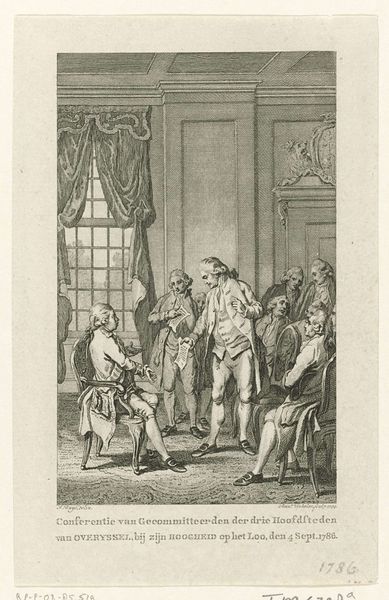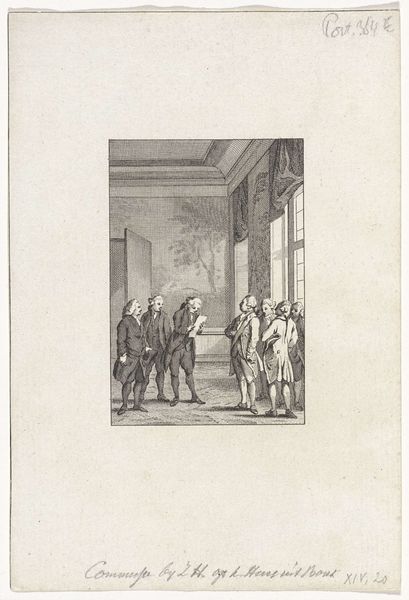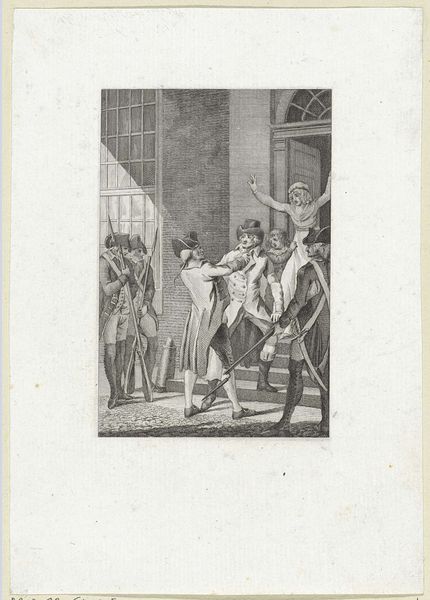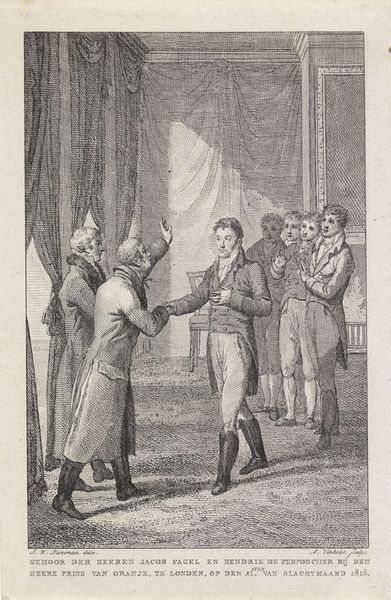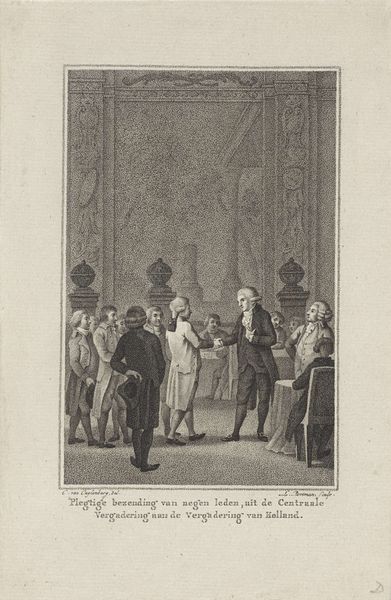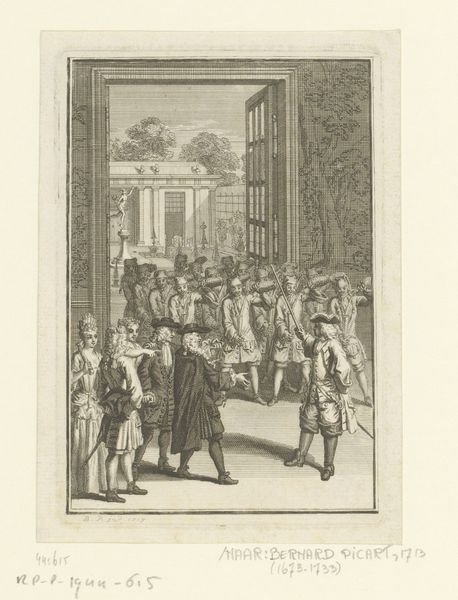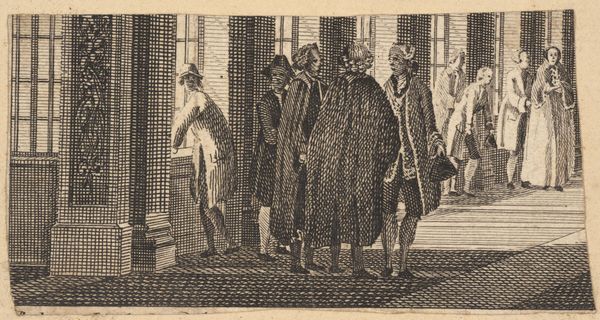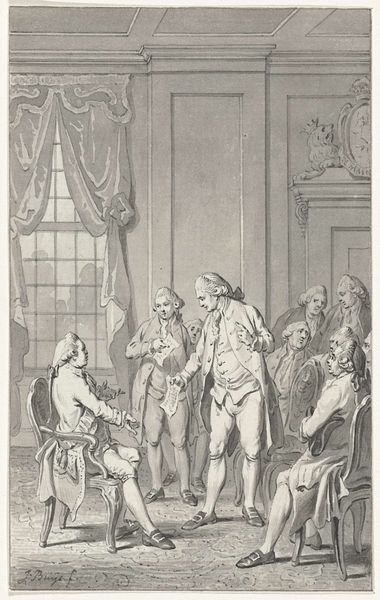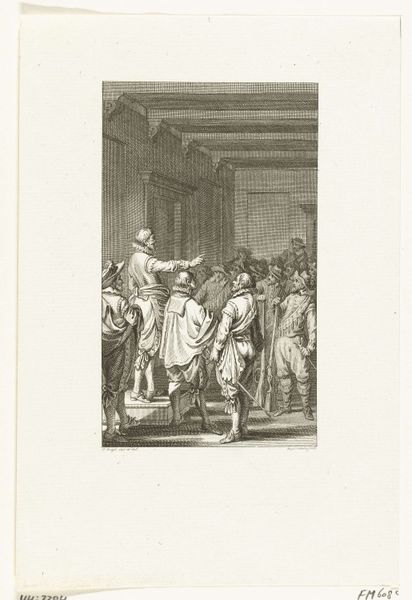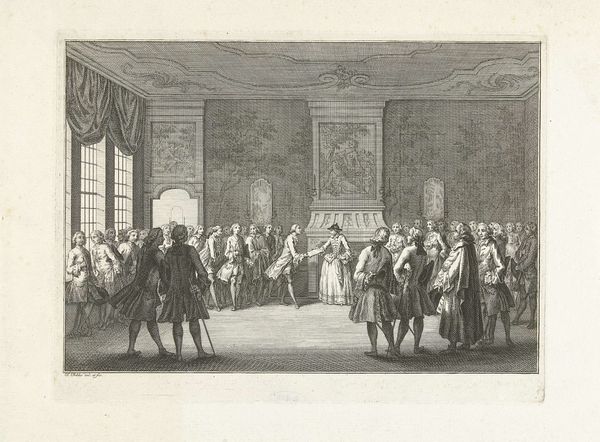
engraving
#
portrait
#
neoclacissism
#
group-portraits
#
history-painting
#
engraving
Dimensions: height 185 mm, width 127 mm
Copyright: Rijks Museum: Open Domain
Editor: Here we have Abraham Vinkeles' engraving, "Audiëntie van Willem I Frederik," made between 1814 and 1816. It’s currently housed in the Rijksmuseum. I'm immediately struck by the formality and staging of this piece. It feels almost theatrical. What do you see in this work? Curator: I see a carefully constructed presentation of power through material means. Notice the detailed rendering of clothing and the architectural backdrop. This isn’t just about representation, but about the labor involved in creating and consuming these symbols of status. How does the material, in this case an engraving, shape the message? Editor: It's interesting that you focus on the engraving itself. I guess I hadn't considered that beyond it simply being a medium to depict the scene. Do you think the choice of engraving was deliberate to reinforce a certain idea? Curator: Absolutely. Engravings, at that time, allowed for mass production and distribution, disseminating this image of the king and solidifying his presence throughout society. This reveals something critical about the production of royal power: its dependence on accessible forms of visual rhetoric and dissemination, much like printed money as a symbol of centralized, modern power. Think of the cultural implications around printmaking -- do you feel it diminishes the supposed "aura" of the event, or amplifies its significance? Editor: That’s fascinating. So, it’s not just about the scene depicted but the means by which it was made accessible to the public. It was a kind of propaganda distributed through the accessibility of a replicable medium. Curator: Precisely! The materiality becomes inseparable from the message. The artist isn't just depicting an event; they're actively involved in the construction of royal authority, made visible through readily available technologies of the period. And perhaps even reinforcing societal structures based on what *could* be owned or replicated. Editor: I’ll never look at an engraving the same way again. Thinking about the role of printmaking as a form of accessible "propaganda" changes everything! Curator: Indeed! The process is deeply intertwined with the social impact, something to consider across many works we encounter.
Comments
No comments
Be the first to comment and join the conversation on the ultimate creative platform.
